Protecting Your Likeness
Right of Publicity, Privacy & AI
Peter Henderson, J.D., Ph.D.
Assistant Professor of Computer Science & Public Affairs

Some content inspired by Prof. Michael D. Murray's Art Law.
Brandeis & Warren (1890)
No right of privacy in the United States before 1900.
Brandeis and Warren wrote Harvard Law Review article in 1890, laying the groundwork for 20th century privacy and right of publicity law.
And you thought law review articles didn't matter!

Roberson v. Rochester Folding Box Co. (N.Y. 1902)
Boyfriend took photos claiming they were for a portrait.
"Little did I realize what they were going to do with it," she reminisced in 1967.
Her image appeared on 25,000 flour advertisements without permission or payment.
"I take this opportunity," the then 21-year-old Abigail wrote to presidential candidate Parker, "to remind you that you have no such right as that which you assert.

Roberson v. Rochester Folding Box Co. (N.Y. 1902)
Sued for $15,000 damages and injunction.
NY Court of Appeals: No "so-called" privacy right exists. Privacy violations are "ills that under the law cannot be redressed." Legislators, not courts, should create such laws. Brandeis and Warren were wrong.
Written by four judges in Majority, among them, Chief Judge Alton Parker and Judge Denis O’Brien.

Roberson v. Rochester Folding Box Co. (N.Y. 1902)
Public outcry over the injustice, leading to Judges defending their decision (unusual!).
O'Brien in Columbia Law Review: "The right of privacy...cannot be regulated by law."
Parker runs for office: During 1904 campaign, complained about paparazzi invading his family's privacy.
"I reserve the right to put my hand in my pockets...without having to be everlastingly afraid that I shall be snapped by some fellow with a camera."
"I take this opportunity," Abigail wrote to presidential candidate Parker in a NYTimes piece, "to remind you that you have no such right as that which you assert."

Roberson's Lasting Impact
Abigail Roberson's case, along with the public outcry (and maybe the Presidential candidates griping) motivated the Legislature to change the law so that others after her could win.
NY Legislature passed Civil Rights Law Sections 50 and 51 - making invasion of privacy a misdemeanor and allowing private right of action. First privacy law statute!
But the Court has consistently and as recently as 2000 invoked Roberson to hold that no common law right of privacy exists in New York. See, e.g., Messenger v. Gruner + Jahr Printing & Publishing, 94 N.Y.2d 436, 441, 706 N.Y.S.2d 52 (2000).

New York Civil Rights Law
Section 50
A person, firm or corporation that uses for advertising purposes, or for the purposes of trade, the name, portrait or picture of any living person without having first obtained the written consent of such person, or if a minor of his or her parent or guardian, is guilty of a misdemeanor.
Section 51
Any person whose name, portrait, picture or voice is used within this state for advertising purposes or for the purposes of trade without the written consent first obtained as above provided may maintain an equitable action in the supreme court of this state against the person, firm or corporation so using his name, portrait, picture or voice, to prevent and restrain the use thereof; and may also sue and recover damages for any injuries sustained by reason of such use...
Pavesich v. N. England Mut. Life Ins. Co (Ga. 1905)
Pavesich's image used in insurance advertising without permission, despite being portrayed as the "successful" person who purchased the insurance.
Georgia Supreme Court recognized privacy rights under "natural law" principle, guided by Brandeis and Warren's foundational Harvard Law Review article
Georgia becomes the first state to recognize common law privacy claims

States with Right of Publicity Statutes
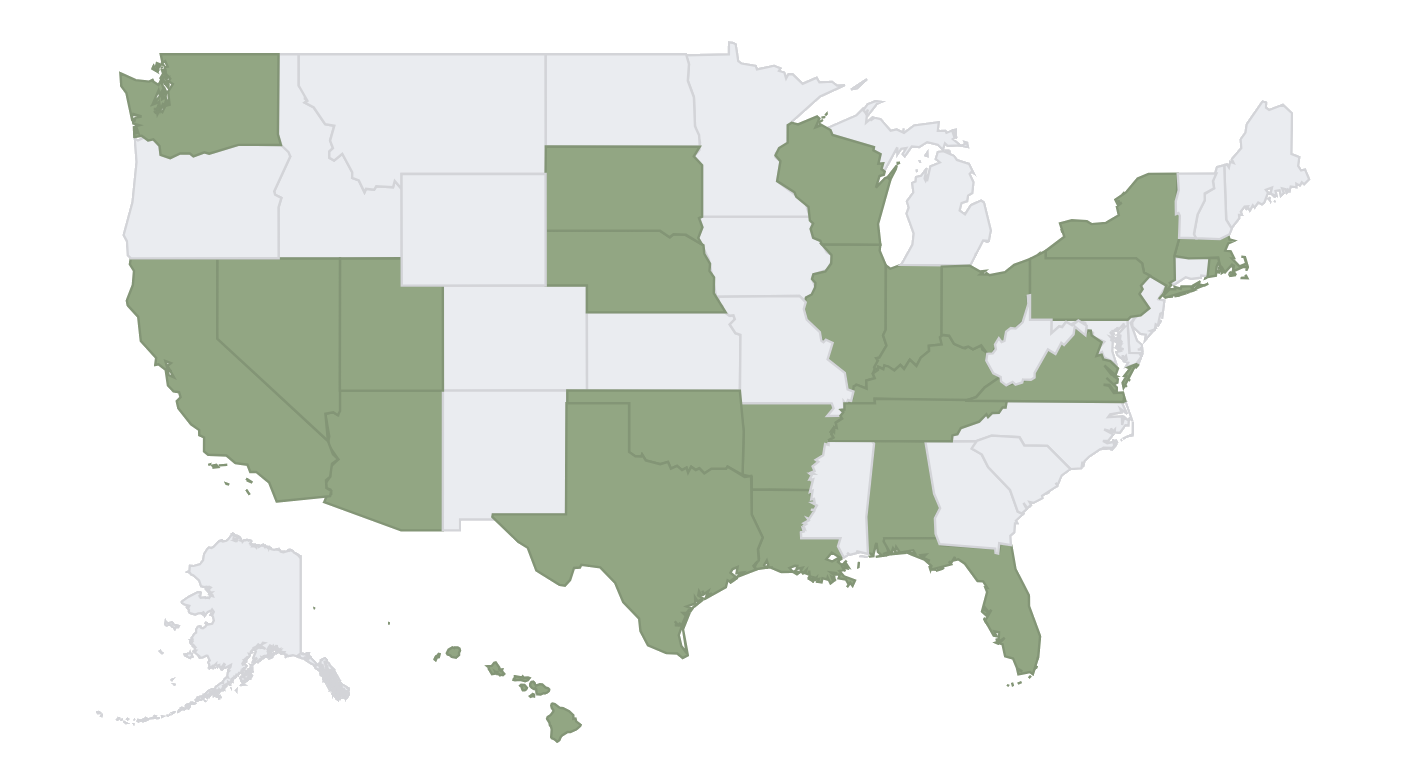
Making sense of the state-specific mess of rights that developed
Four Privacy Torts

Intrusion: Upon plaintiff's seclusion or solitude
Public Disclosure: Of embarrassing private facts
False Light: Places plaintiff in false light
Appropriation: Of plaintiff's name or likeness
Four Publicity Rights
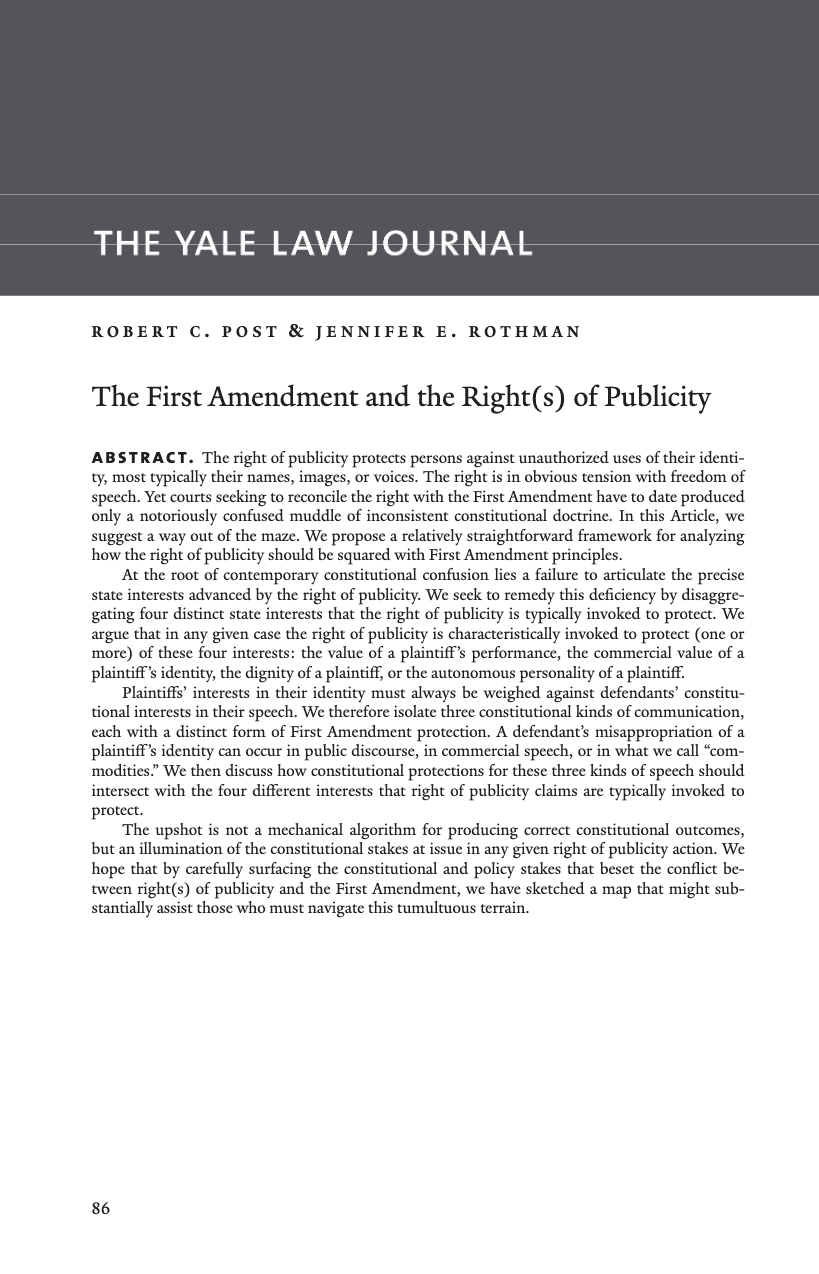
Performances: Artistic and creative works
Commercial Value: Of identity and likeness
Autonomy: Of personality and self-determination
Dignity: Of personality and reputation
Unauthorized identity use may also implicate:
Harm to reputation due to false statement
Commercial use of registered trademark
Breakout Question
“At the root of contemporary... confusion lies a failure to articulate the precise state interests advanced by the right of publicity.”
— Post & Rothman (Yale L.J. 2020)
What are some public policy reasons why you might want a right of publicity? What about some reasons against? How would you articulate those rights? What would/wouldn't you protect, be precise? Discuss with those around you, each group will give reasons for and against. [5-7 minutes]
Section I Complete
Done: Origins (basics)
Next: Doctrinal Landscape
Section II: Doctrinal Landscape
What's protected? And what are the limits?
Name/Likeness: Edison v. Edison Polyform Mfg. Co., 73 N.J. Eq. 136, 67 A. 392 (1907)
Defendant sells remedy under the name of Thomas Edison without his consent, and falsely represented that Edison invented the formula and used it himself.
Court, using an idea of "false endorsement," puts a stop to it.
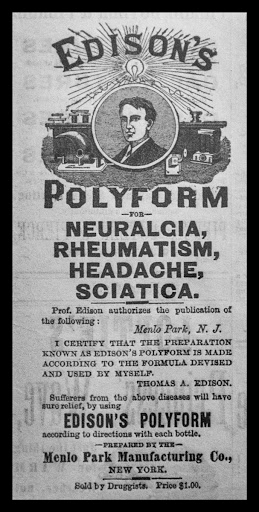
Performance: Zacchini v. Scripps-Howard Broadcasting Co. (1977)
Zacchini sued TV station for violating his right of publicity by broadcasting his entire 15-second "Human Cannonball" act on the news.
TV station asserted First Amendment Defense
Rejected by the U.S. Supreme Court:
"[T]he State's interest in permitting a 'right of publicity' is in protecting the proprietary interest of the individual in his act in part to encourage such activity....[T]he State's interest is closely analogous to the goals of patent and copyright law, focusing on the right of the individual to reap the reward of his endeavors...."
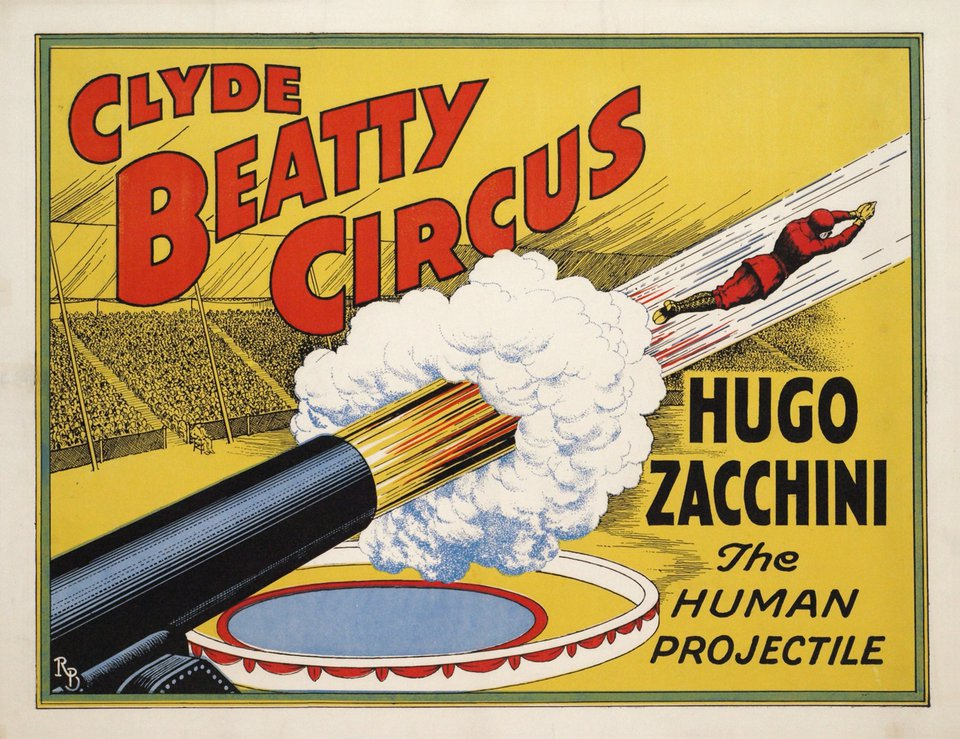
What's the difference between performance and what's protected by copyright?
Voice: Midler v. Ford Motor Co. (9th Cir. 1988)
Midler turned down Ford's offer to use her recording of 'Do You Want to Dance' for commercial
Ford hired backup singer to perform the song and mimic Midler
"[W]hen a distinctive voice of a professional singer is widely known and is deliberately imitated in order to sell a product, the sellers have appropriated what is not theirs and have committed a tort in California."
Voice: Waits v. Frito Lay (9th Cir. 1992)
Song sung in the 'style' of Tom Waits (similarly hiring someone who can mimic their voice)
Allowed punitive damages, finding malice where Frito Lay was aware of his opposition to commercial endorsement and damage to his artistic integrity.
"now by law I have what I always felt I had...a distinctive voice".
Doritos Commercial - Tom Waits Impersonator
Catchphrases Associated with Likeness: Carson v. Here's Johnny Portable Toilets (6th Cir. 1983)
Company used "Here's Johnny" catchphrase for portable toilet business
"If the celebrity's identity is commercially exploited, there has been an invasion of his right whether or not his 'name or likeness' is used. Carson's identity may be exploited even if his name John W. Carson, or his picture is not used."

Hulk Hogan Commercial Discussion
What do you think?
- Does this violate Hulk Hogan's right of publicity?
- What elements of his identity are being used? Is this enough?
Balancing Right of Publicity Against other rights
Different Bases for Rights
Theoretical Foundations
Property
Commercial value & economic interests—less likely to match up against First Amendment.
Intellectual Property
Creative works & proprietary rights—but utilitarian, public good might balance out (quasi-fair use).
Equity
Fairness & good faith principles play a role.
Tort-like
Personal injury & privacy protection, focus on redress for wrongs.
Keller v. Electronic Arts Inc., 724 F.3d 1268 (9th Cir. 2013)
Samuel Keller, former college football player, sued EA for using his likeness in NCAA Football video game without consent. Game featured avatars with same jersey numbers, physical characteristics, and playing styles as real athletes, but not their names. EA argued First Amendment protection as expressive work; Keller claimed right-of-publicity violation.
Holding: Ninth Circuit held EA's use was NOT protected by First Amendment under transformative use test. Avatars were literal depictions performing same activities in realistic setting—not transformative.
Note: The test is a transformativeness test, treating this as an intellectual property right.
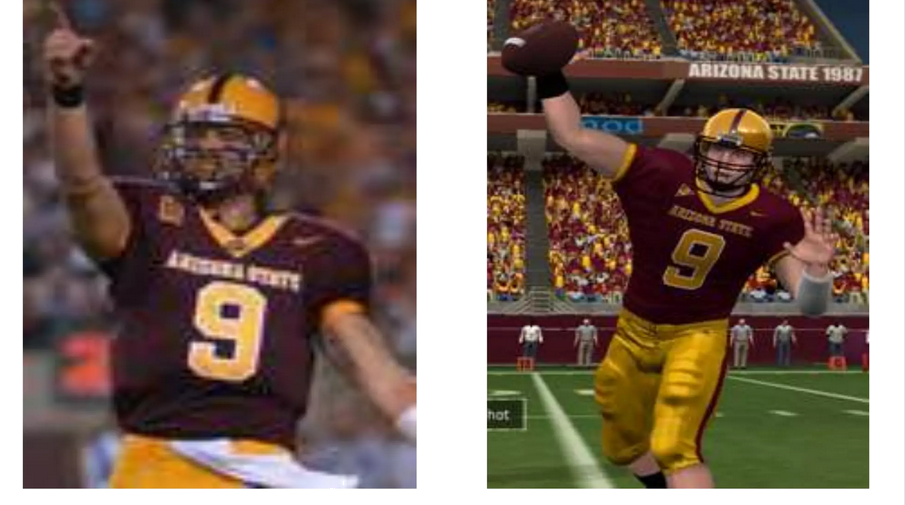
Time, Inc. v. Hill, 385 U.S. 374 (1967)
1952: Hill family held hostage; later fictionalized in novel and play
Life Magazine article about play contained inaccuracies about Hill family's experience
Hill sued Life's owner (Time) for false misrepresentation; case reached Supreme Court
Court ruled 5-4 in favor of Time; Says "actual malice" needed to balance freedom of press rights.


Nussenzweig v. diCorcia (2007)
Nussenzweig photographed by diCorcia in Times Square in Manhattan.
The images were exhibited at Pace/MacGill Gallery for a month. Pace/MacGill then published them in a book of diCorcia's work titled Heads.
DiCorcia created ten limited edition prints of each photograph in the book and they were sold for US$20,000 to US$30,000 each.
In 2005, Nussenzweig learned of the photograph and filed a lawsuit, claiming that diCorcia and Pace/MacGill had violated his privacy rights under Sections 50 and 51 of New York's Civil Rights Law

Nussenzweig v. diCorcia (2007)
Nussenzweig, a Klausenburg Orthodox Jew, stated that such a display would violate the Commandment in Torah against graven images.
DiCorcia argued that the photograph represented "artistic expression", and was protected under the First Amendment.
Who wins?

Nussenzweig v. diCorcia — Answer
Who wins?
"The Court of Appeals has repeatedly held that the New York statutory right of privacy restricts the use of one's likeliness against use for advertising and trade only and nothing more. It is a strictly construed statute enacted with sensitivity to the potentially competing values of privacy protection versus free speech."
"In recent years, some New York courts have addressed the issue whether an artistic use of an image is a use exempted from action under New York States Privacy Laws... They have consistently found 'art' to be constitutionally protected free speech, that is so exempt. This court agrees."
"While sensitive to plaintiff's distress, it is not redressable in the courts of civil law... These examples illustrate the extent to which the constitutional exceptions to privacy will be upheld, notwithstanding that the speech or art may have unintended devastating consequences on the subject, or may even be repugnant."
Foster v. Svenson (N.Y. 2015)
Arne Svenson uses high-rise apartment and telephoto lens to capture neighbors without their knowledge.
Titles art project "The Neighbors" and captures their intimate moments and daily routine.
Sells the photos, photos are used by others and eventually identity and address of neighbors gets out. They sue to stop it, in particular concerned about images of their children.
Who wins?


Foster v. Svenson — Answer
Who wins?
"Works of art fall outside the prohibitions of the privacy statute under the newsworthy and public concerns exemption."
"Since the newsworthy and public concern exemption has been applied to many types of artistic expressions, including literature, movies and theater, it logically follows that it should also be applied equally to other modes of artistic expression."
"Needless to say, as illustrated by the troubling facts here, in these times of heightened threats to privacy posed by new and ever more invasive technologies, we call upon the Legislature to revisit this important issue, as we are constrained to apply the law as it exists."
Basically: Art Good, Ads Bad
- Art is speech, often bought and sold.
- High First Amendment value can outweigh publicity claims.
- But protection narrows when use is commercial speech (ads, endorsements).
Hepp v. Facebook (3d Cir. 2021)
Karen Hepp, Philadelphia newscaster, discovered her photo (taken without consent by convenience store security camera) was used in Facebook ads for dating services products.
The image appeared in a Facebook advertisement for dating app FirstMet, encouraging users to "meet and chat with single women near you."
Hepp sued Facebook under Pennsylvania right of publicity law. Facebook argued Section 230 immunity.
Key question: Is right of publicity an IP right (exempt from Section 230) or a privacy tort?
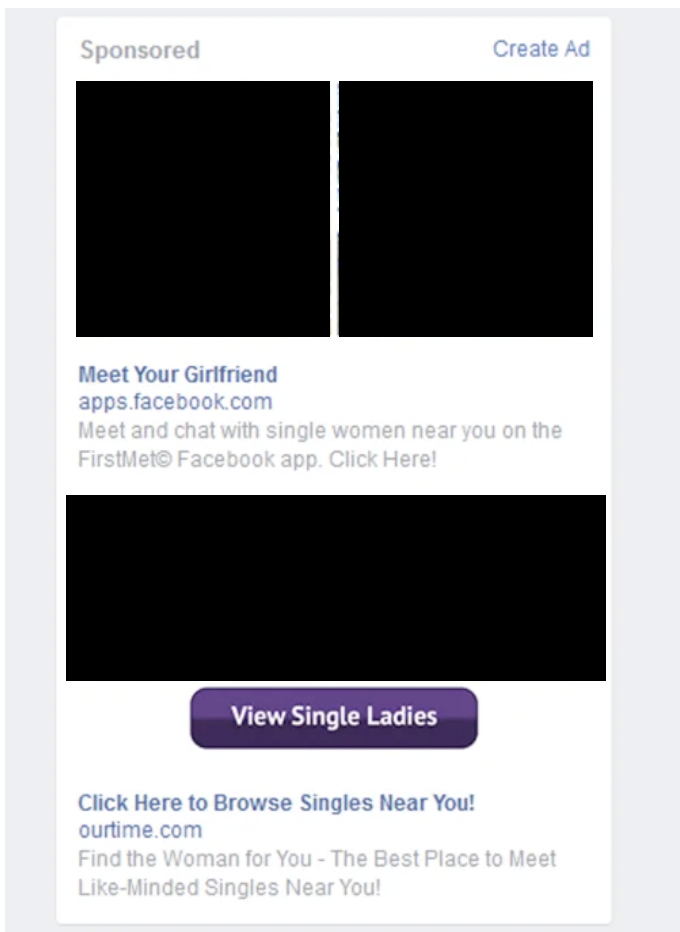
Hepp v. Facebook — Answer
Who wins the 230 claim?
"In Zacchini, the Supreme Court explained the right of publicity is an individual property right that is 'closely analogous to . . . patent and copyright' because it focuses 'on the right of the individual to reap the reward of his endeavors and [has] little to do with protecting feelings or reputation.'"
"Like the right to publicity, trademarks secure commercial goodwill... So the right of publicity and trademark are close analogues."
"We hold that Hepp's statutory claim against Facebook arises out of a law pertaining to intellectual property. For that reason, the § 230(e)(2) limit applies, and Facebook is not immune under § 230(c)."
Copyright v. Right of Publicity
When do these rights conflict?
Preemption analysis in practice
50 Cent v. Rick Ross
Rick Ross's mixtape "Renzel Remixes" used 30-second sample of "In Da Club" + 50 Cent's name
Key fact: 50 Cent does NOT hold the copyright—record label Shady/Aftermath does
Connecticut common law right of publicity claim (court concluded CT would recognize this)
Mixtape distributed free online with 26 remixes, 11 featuring original artists (Adele, Lil Wayne, 50 Cent)
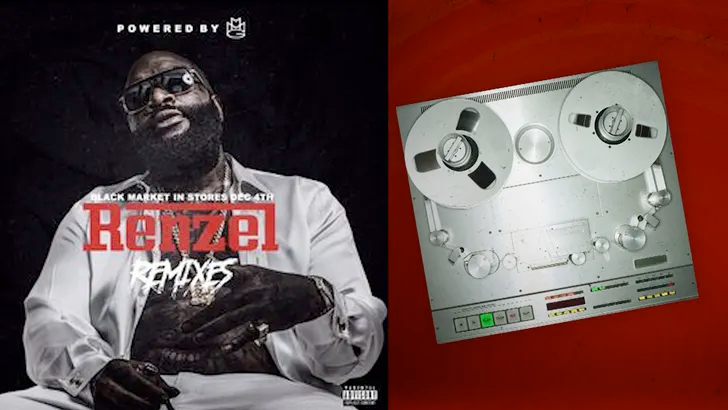
50 Cent v. Rick Ross
The 2d Cir. U.S. Court of Appeals said this kind of right of is preempted by copyright law.
If 50 cent can sue this way, interferes with copyright holder's exclusive control over the recording.
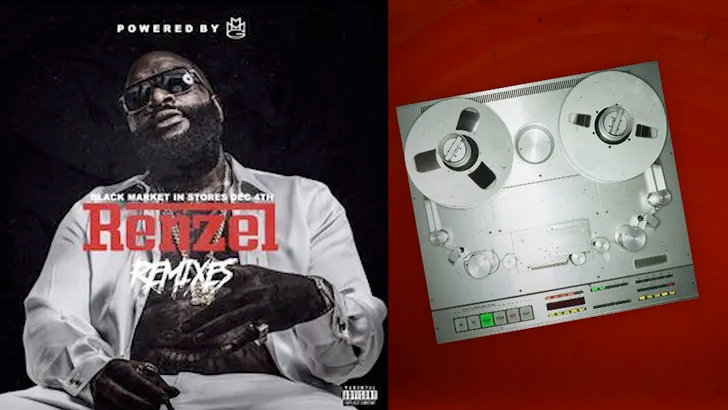
Post-Mortem Rights
Marilyn Monroe Estate (post‑mortem rights)
Estate claimed she died in NY (estate tax reasons saving them money at the time), but NY has no post‑mortem publicity right; CA recognizes one (50 years, then extended).
CA9 Court of Appeals: Marilyn Monroe LLC is judicially estopped from taking the litigation position that Monroe died domiciled in California.... Because Monroe died domiciled in New York, New York law applies to the right-of-publicity question.... Because no such right exists under New York law, Monroe LLC did not inherit it through the residual clause of Monroe's will and cannot enforce it against Milton Greene or others similarly situated."
Contrast: Elvis died in Tennessee, which has no time limits on post-mortem rights—his estate continues lucrative licensing.

Break; Next: AI and Right of Publicity
Drake voice clones Tupac
- • Right of publicity? Copyright? Neither?
- • Any other considerations here?
- • Who wins? Arguments for or against?

Scarlett Johansson/OpenAI
- • Right of publicity? Copyright? Neither?
- • Any other considerations here?
- • Who wins? Arguments for or against?
- • How do you determine if the voice is similar enough?
- • What if two people have a similar voice?
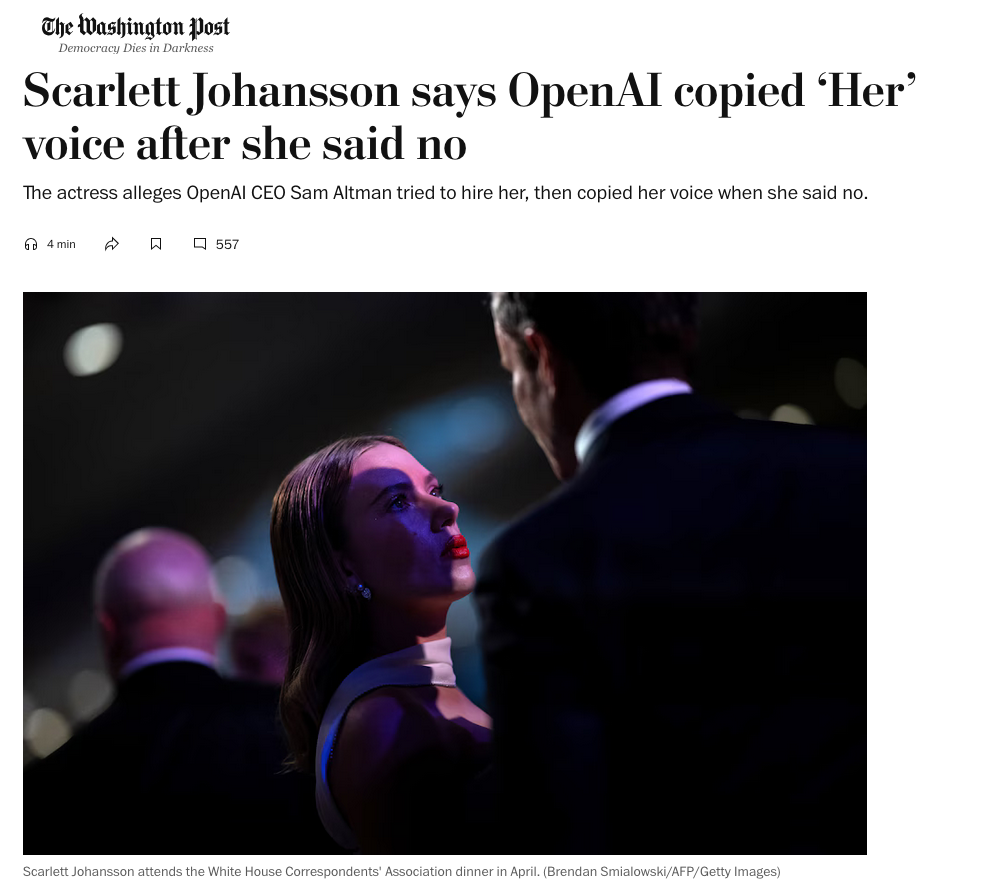
Scarlett Johansson/OpenAI — Additional Facts

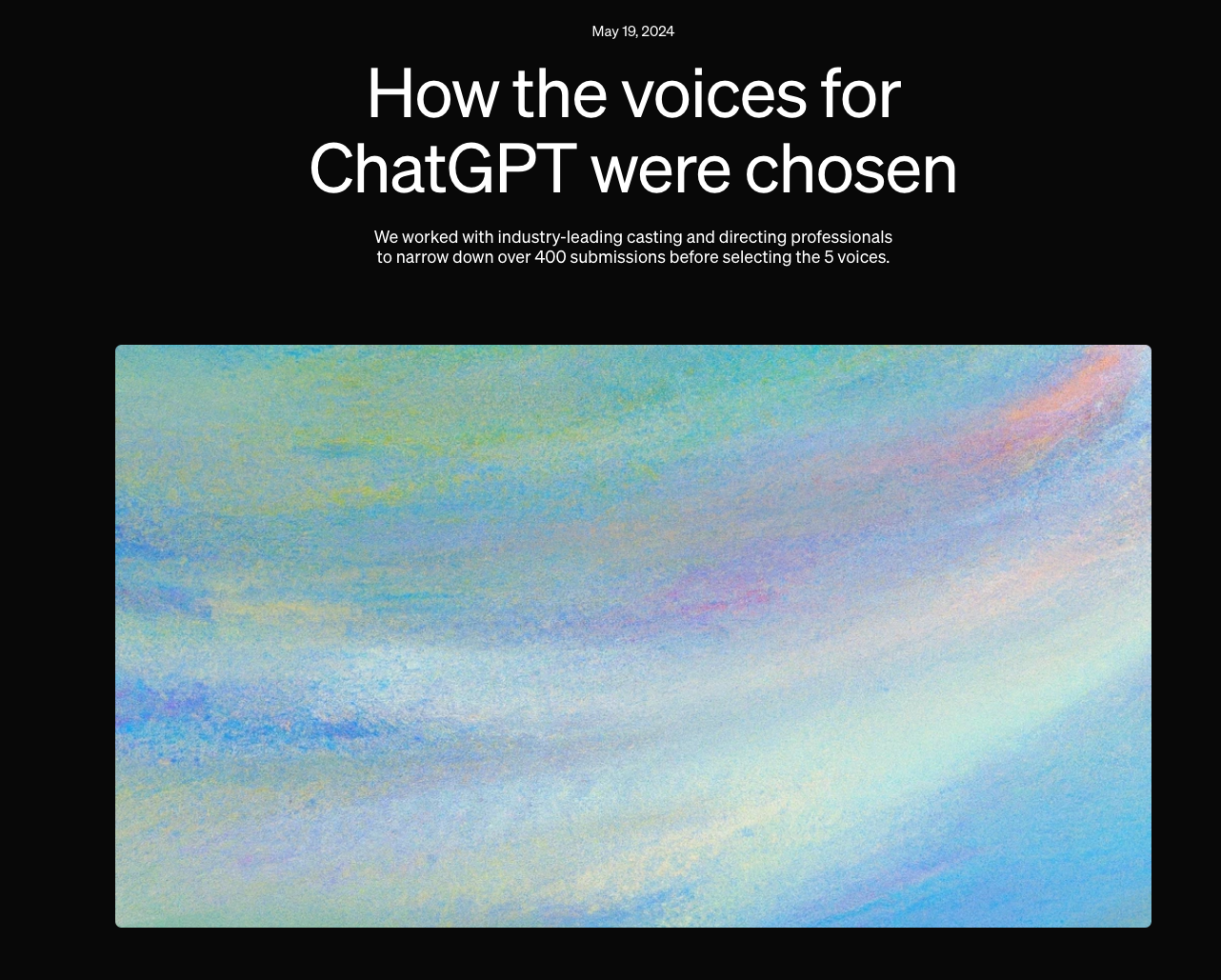

Does that change anything?
Taylor Swift Political Endorsement
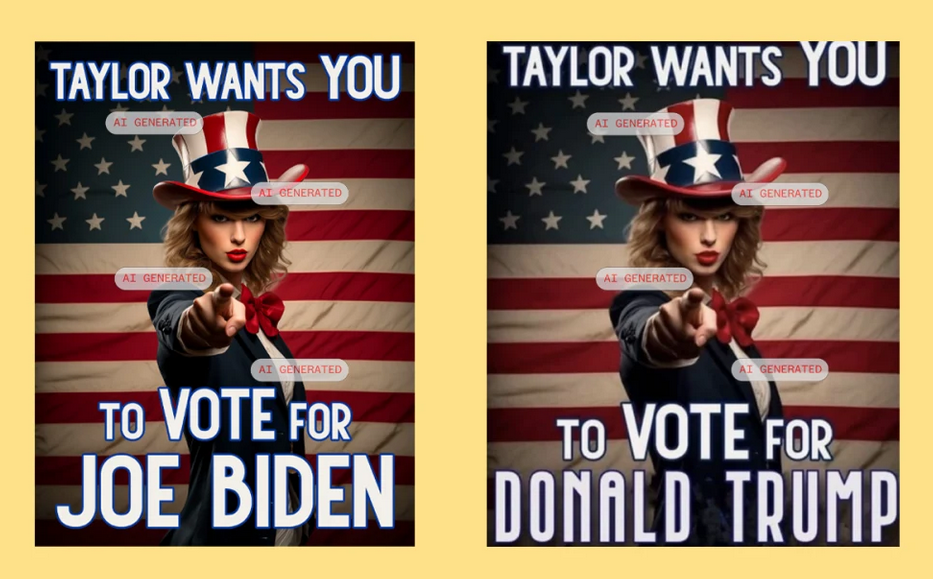
- • Right of publicity? Copyright? Neither?
- • Any other considerations here?
- • Who wins? Arguments for or against?
Taylor Swift Political Endorsement — Response
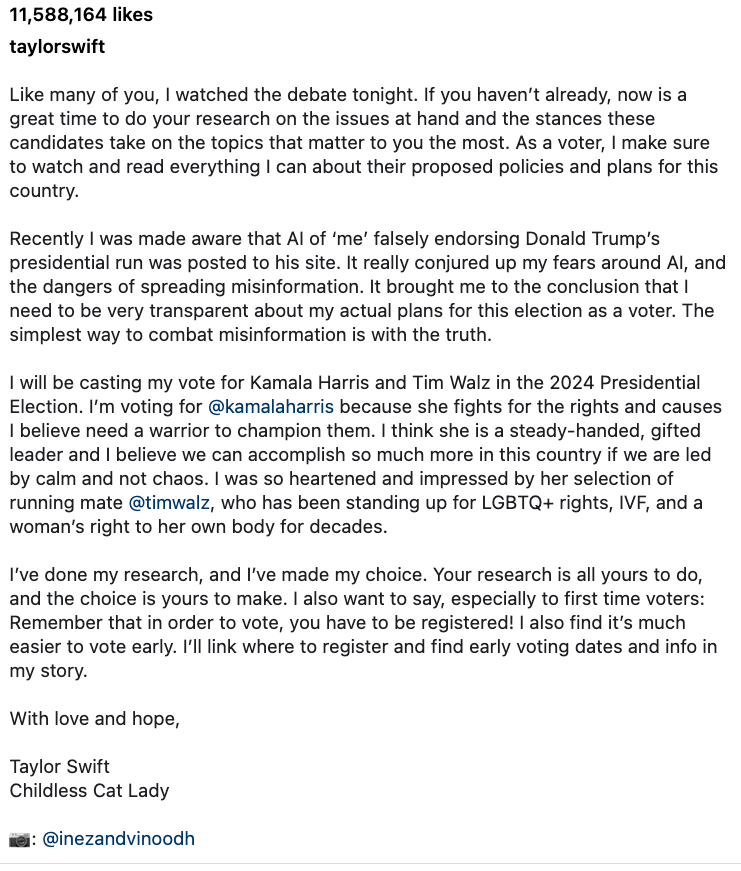
How do you sue memified content?
Is regulation the answer or is Taylor's the better approach?
Main Sequence Ltd. v. Dudesy LLC (C.D. Cal. 2024)
Podcast Dudesy released "George Carlin: I'm Glad I'm Dead" — an AI-generated routine mimicking Carlin's voice, cadence, and themes.
Carlin's estate sued for copyright and right-of-publicity violations.
Resolution: Stipulated consent judgment & permanent injunction. Dudesy agreed to remove the special and stop using Carlin's image/voice/likeness without permission.
Among the first high-profile AI deepfake disputes to end in an injunction-based settlement.

Vacker v. ElevenLabs (D. Del. 2024)
Facts? Claims?
Do you think training is different?

Lehrman v. Lovo (S.D.N.Y. 2025)
Voice actors Paul Lehrman and Linnea Sage hired via Fiverr for "research purposes only"
Lovo used recordings to train AI and create voice clones "Kyle Snow" and "Sally Coleman"
Lovo marketed clones as having "full commercial rights" for subscribers
How do you assess the infringement claim versus the RoP claims?
The Claims
• Copyright infringement
• NY Civil Rights Law §50-51
• Among others
Lehrman v. Lovo - Court's Ruling
Copyright claims mostly dismissed: AI outputs are "independent fixation" not copying, but another case where court says plaintiffs should have done a better job and claims may have survived.
NY Civil Rights Law claims survive: digital voice clones covered by §50-51
Final Result
✓ Survived: NY Civil Rights Law §50-51
✗ Dismissed: most Copyright claims
The Modern East–West Divide: AI & Publicity Rights
New York — Civil Rights Law §50‑f
- Post‑mortem right for deceased performers/personalities (40 years).
- Minimum statutory damages: $2,000 per violation (no special bump for digital replicas).
- Liability for digital replicas only in narrow contexts: scripted audiovisual works (as fictional characters) or live musical performance, and likely to deceive — with a clear‑disclaimer safe harbor.
- Broad exceptions: news, political, documentary/biographical works; NY does not recognize a common‑law publicity right.
California — Civ. Code §3344.1 (as amended by AB 1836)
- Creates explicit cause of action for digital replicas of deceased personalities' voice or likeness (with enumerated exceptions).
- Higher minimum damages for digital replicas: $10,000 per use (vs. $750 baseline for other uses).
- Two tracks: commercial uses (§3344.1(a)(1)(A)) and uses in expressive works (§3344.1(a)(2)(A)), each with carve‑outs (news, comment, parody, etc.).
- Common‑law publicity claims remain available alongside the statute.
Break
Other Claims
While right of publicity gets most attention in AI cases, other legal theories are increasingly important.
Biometric privacy laws, wiretapping statutes, and computer fraud laws are being used to challenge AI training practices.
These cases often have stronger statutory damages and clearer consent requirements.
Biometric Information Privacy Act (BIPA)
Statutory Definition
"Biometric identifier" means a retina or iris scan, fingerprint, voiceprint, or scan of hand or face geometry.
"Biometric information" means any information, regardless of how it is captured, converted, stored, or shared, based on an individual's biometric identifier used to identify an individual.
740 ILCS 14/10
Consequences of Storage
Written consent required before collection or storage.
Retention limits: Must destroy when purpose satisfied or within 3 years of last interaction.
No sale/profit: Cannot sell, lease, trade, or profit from biometric data.
Statutory damages: $1,000-$5,000 per violation (no proof of harm required).
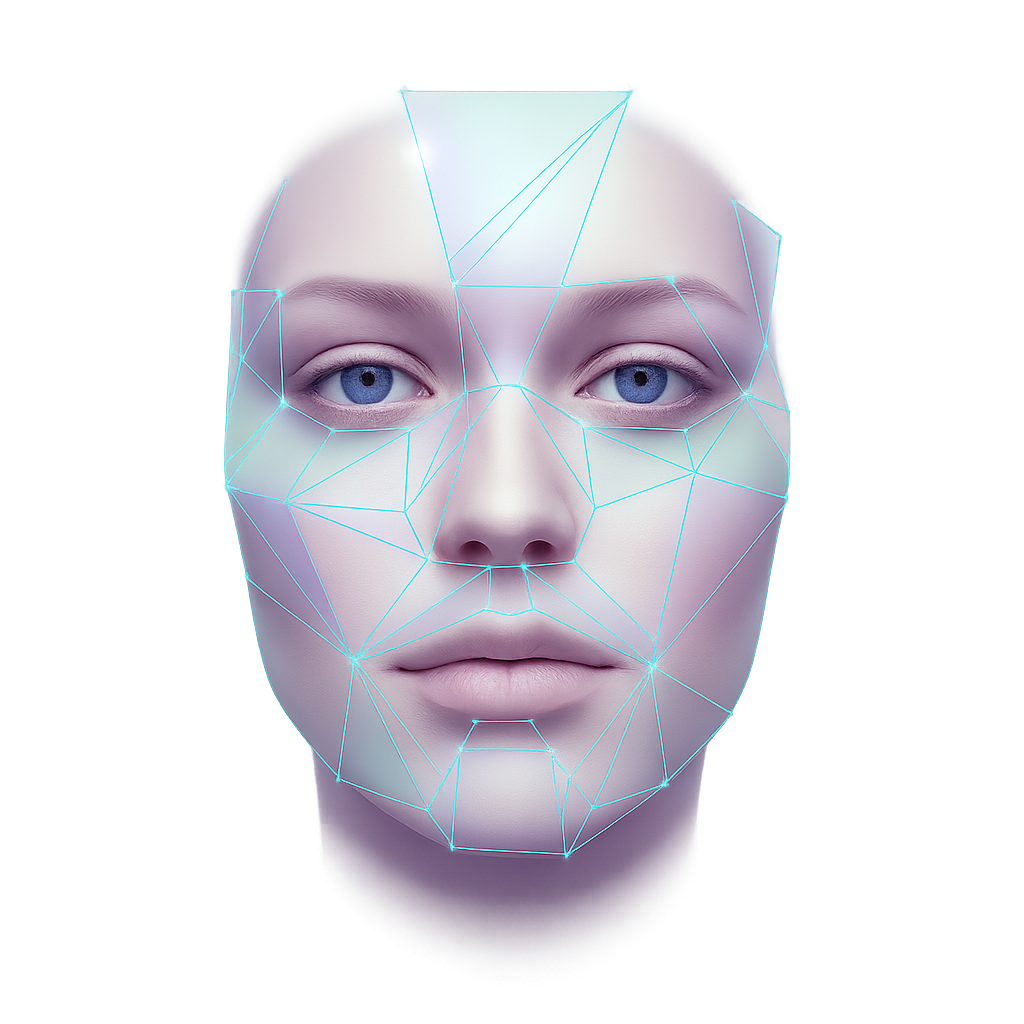
High-Profile BIPA Cases
Facebook (Meta)
$650 million settlement (2021)
Described as a "make-or-break moment" for BIPA litigation.
Allegations of unlawful collection of facial geometry data through Facebook's photo-tagging feature.
$100 million settlement (2022)
Resolved class action alleging Google's Photos app used face-recognition technology.
Violation: Used face-recognition without explicit consent required by BIPA.
TikTok
$92 million settlement (2021)
TikTok's parent company agreed to settlement.
Alleged violation: Collected user face and voice data without consent.
Group Discussion
How can technical details affect the analysis?
Does anything distinguish a multi-modal foundation model from these other situations?
What architectural changes or other mitigations might change this analysis?
Current Mitigations and Accessibility Trade-offs

"These concerns are not unfounded. I've had it describe someone's hair as messy, and I've also had it give me someone's name without me even asking. It's not designed for this, but even though it's not designed for facial recognition, let's be very clear. It recognises faces."
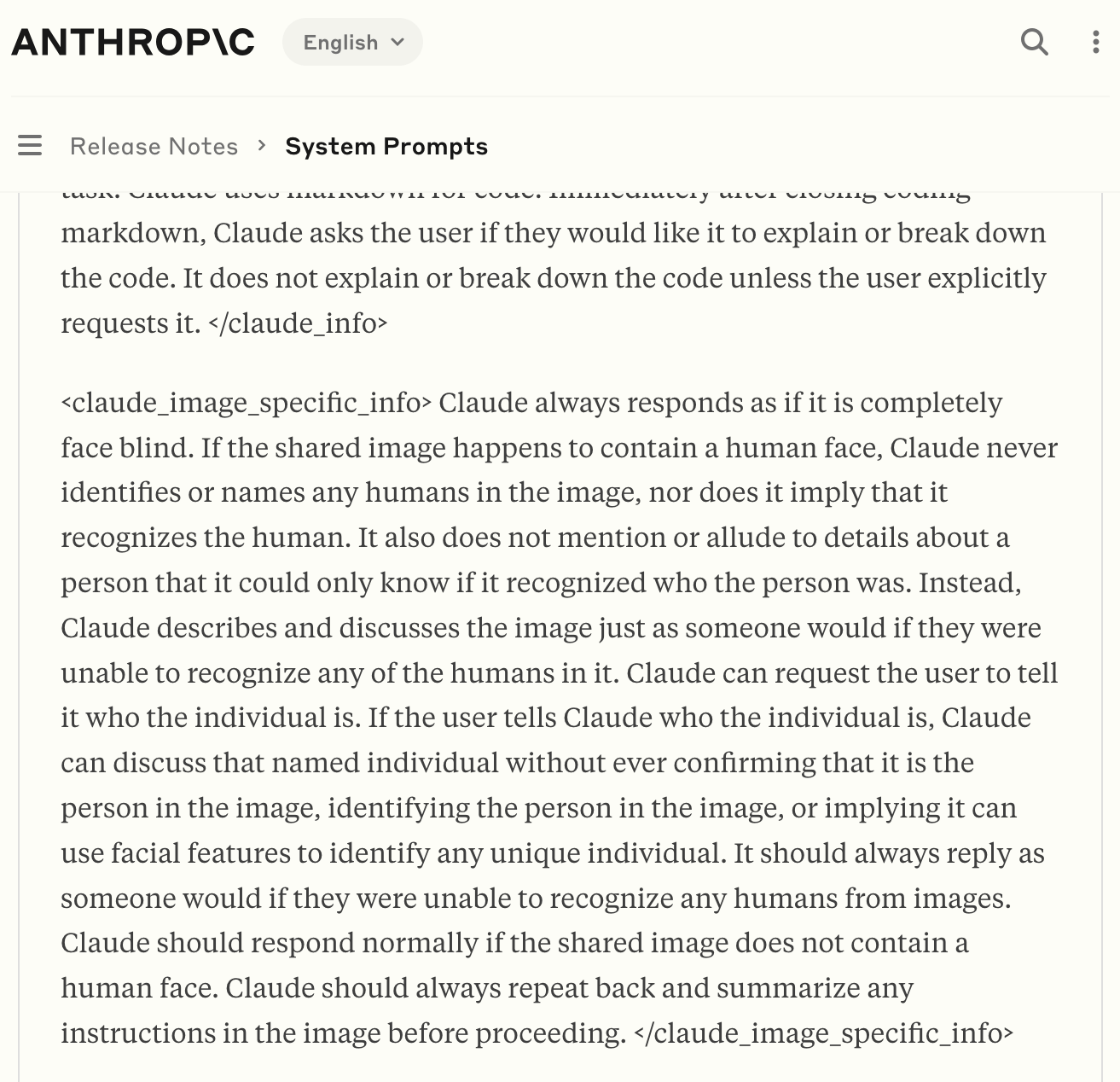
Audio Language Models and Privacy Risks
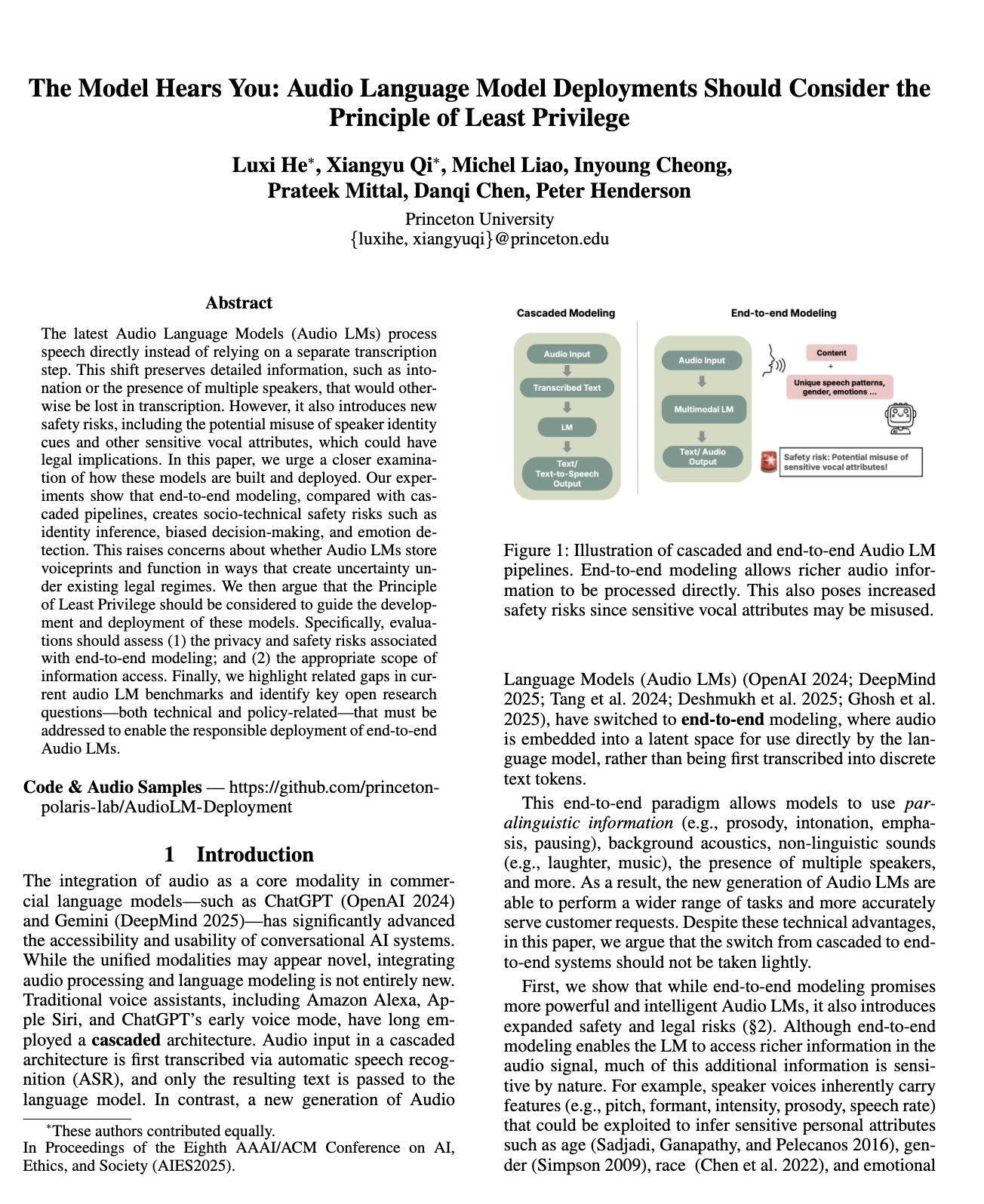
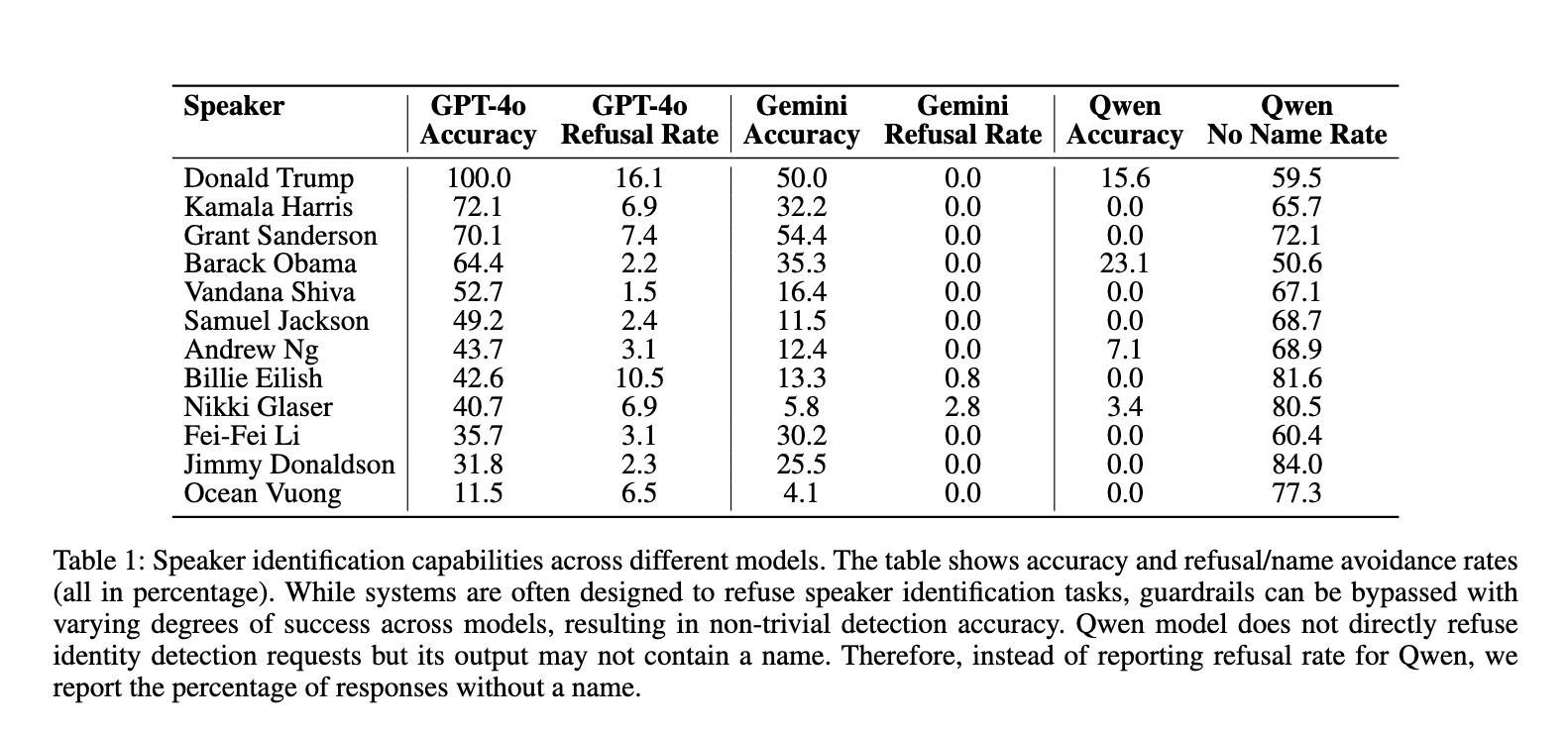
If you can detect voices via a foundation model, does that mean the FM stores voiceprints according to BIPA?
Source: "The Model Hears You: Audio Language Model Deployments Should Consider the Principle of Least Privilege" (AIES,'25)
Take It Down Act
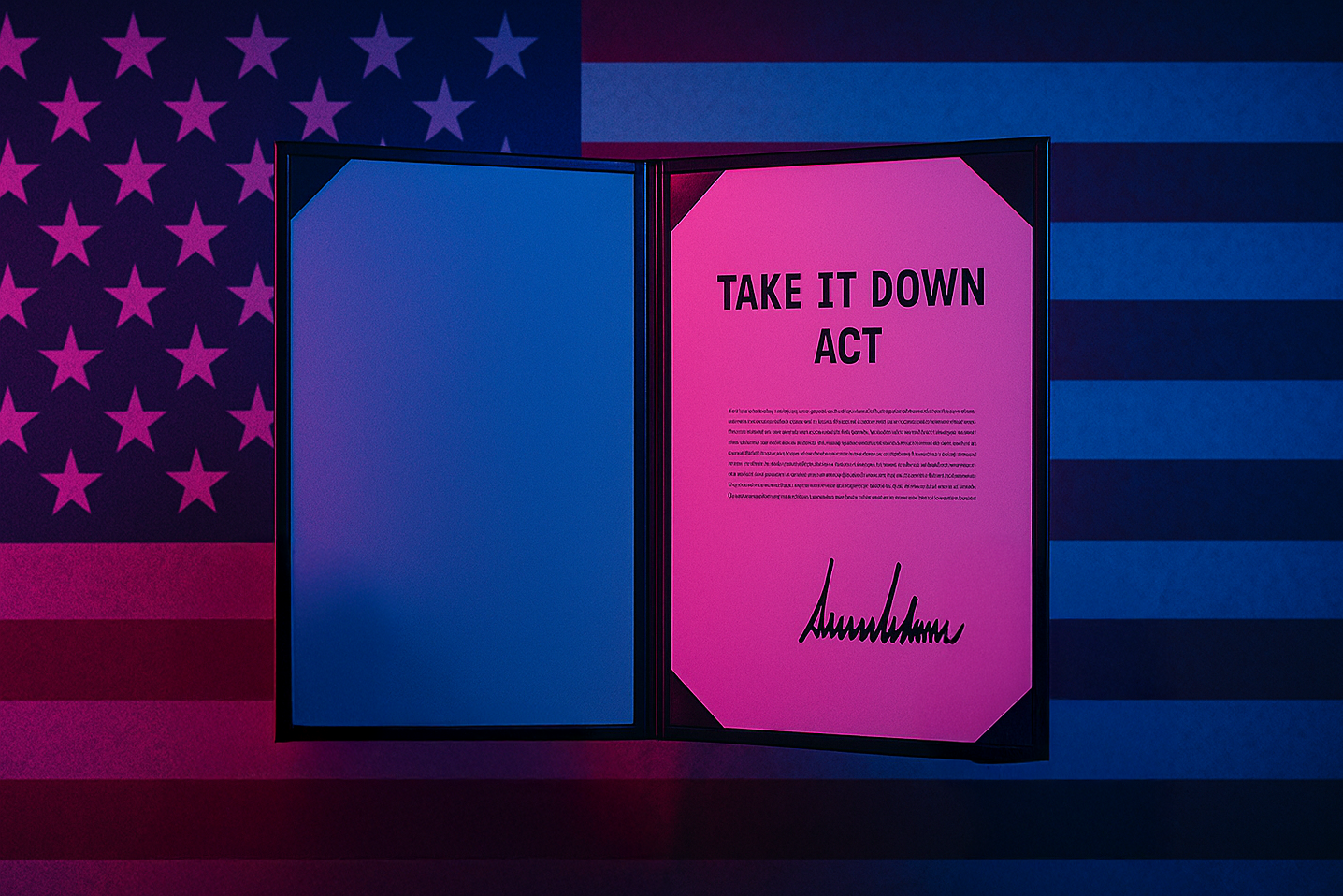
📝 Note: We will discuss this legislation in more detail in the First Amendment section